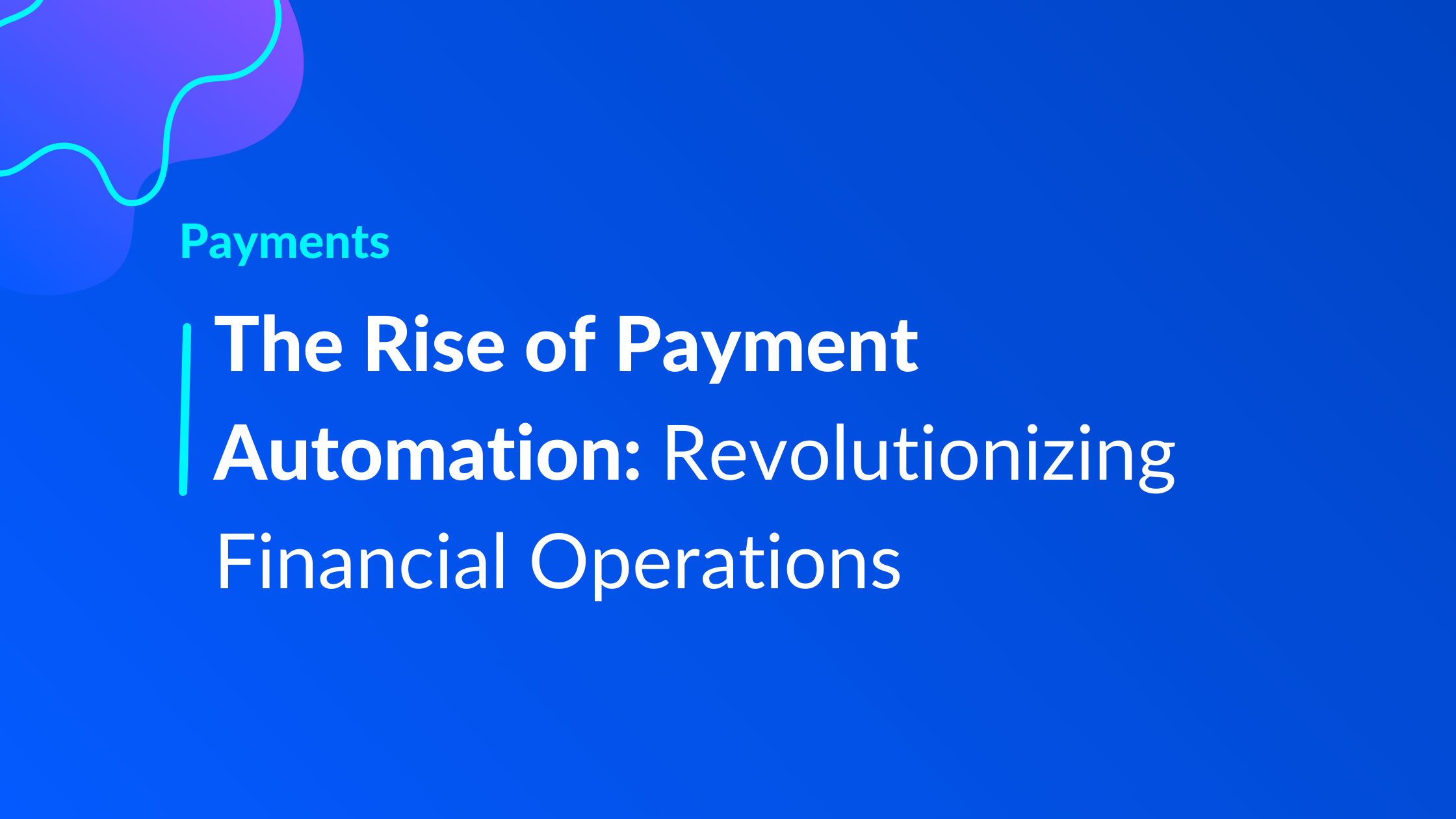The way businesses handle financial transactions is undergoing a distinguished revolution, fundamentally changing how companies manage their cash flows, reduce costs, and improve efficiency. Payment automation, once a futuristic concept, is now a cornerstone of financial management.
In this blog post, we'll explore the myriad ways payment automation is transforming the financial sector.
Exploring the Landscape of Payment Automation
Payment automation is more than just a buzzword. It's the strategic adoption of technology to streamline financial processes, reducing manual intervention and potential for human error. The landscape has exploded with innovative solutions, from basic direct deposit systems to sophisticated integration platforms.
The velocity of money — the speed at which transactions occur — is increasing, and businesses are reaping the benefits. Payment automation is not only about rapid exchange: it's a catalyst for a shift in financial culture, a philosophical move from traditional methods to cutting-edge techniques.
Unpacking the Benefits of Payment Automation
Efficiency and Time-Saving
Gone are the days of manual data entry and printing paper checks. Automated systems execute transactions in seconds, freeing up valuable resources. Staff can focus on strategic tasks rather than administrative drudgery, leading to increased productivity and business agility.
Cost Reduction and Savings
The cost of manually processing payments is significant, not just in labor but also in materials and potential fees. Automation slashes these costs, providing a clear return on investment and fiscal discipline that's hard to match with traditional methods.
Improved Accuracy and Error Reduction
Humans make mistakes, but machines operating with accurate data do not. This is perhaps one of the most critical benefits of payment automation. Fewer errors mean cleaner financial records, stronger relationships with vendors, and improved regulatory compliance.
Enhanced Security and Fraud Prevention
By centralizing payment processing, businesses can enforce stricter controls and use robust security features to protect financial data. Fraudulent activities are less likely to go undetected and payments can be encrypted or tokenized for additional security layers.
Use Cases of Payment Automation
Accounts Payable Automation
Automating the accounts payable process accelerates approvals, streamlines workflows, and provides clear visibility into financial commitments. It's a game-changer for managing cash flows and taking advantage of early payment discounts.
Payroll Automation
Forget manual calculations of hours worked and wages earned. Payroll systems today can integrate with time tracking software, calculate payments to the penny, and disburse funds quickly and efficiently.
Vendor and Supplier Payments Automation
For businesses managing a complex network of suppliers, automated payments provide a streamlined approach that ensures all parties are paid accurately and on time, strengthening partnerships.
Subscription and Recurring Payments Automation
Monthly services and recurring transactions can be a headache to manage manually. Automation ensures that recurring bills are paid like clockwork, maintaining service continuity while saving time and resources.
Navigating Challenges and Considerations
While the benefits of payment automation are substantial, the road to implementation is not without its speed bumps. Here are a few considerations businesses must navigate.
Integration with Existing Systems
Many companies' financial systems are as unique as their fingerprints. Integrating an automation solution seamlessly with existing platforms can be complex and sometimes requires a nuanced approach.
Security and Data Protection
As payments become increasingly digital, security and data protection become more critical. Businesses must ensure that their payment automation systems meet and exceed industry standards to safeguard sensitive financial information.
Employee Training and Adoption
Technology is only as good as the people using it. Adequate training and change management are crucial to the successful adoption of payment automation. Without employee buy-in, even the best automation system will fall short of its potential.
Cost of Implementation and Maintenance
Adopting a new payment automation system involves significant upfront costs, including software purchase, customization, and staff training. Ongoing maintenance and updates are also factors that must be taken into account when budgeting for payment automation.
Future Trends and Innovations in Payment Automation
The future of payment automation is a thrilling frontier, with cutting-edge technologies poised to redefine financial operations.
AI and Machine Learning in Payment Automation
Artificial intelligence can analyze financial data to predict payment trends and suggest optimized payment schedules. Machine learning is the key to automating complex, data-driven financial decisions.
Blockchain and Cryptocurrency Integration
The transparency and immediacy of blockchain technology are a natural fit for payment automation, providing secure, irrefutable ledgers of financial transactions. As for cryptocurrency, some see it as the ultimate form of payment automation, enabling borderless and near-instantaneous transactions.
Mobile Payment Automation
The ubiquity of smartphones is driving a new wave of payment automation, with innovative apps that allow for p2p transactions, mobile wallet use, and even contactless payments.
Payment automation is the present and future of efficient financial operations. By providing a streamlined, secure, and precise method for managing money, businesses are able to save time, cut costs, and operate with unprecedented accuracy. It's not a matter of if companies will adopt automation, but when and how they will do so.
As we've now learned, the benefits are clear, and the potential for further innovation is limitless. For financial leaders, the message is clear: Embrace payment automation, and watch your operations transform.
Discover end-to-end financial automation with WisePay, which seamlessly works together with Wise-Sync, to automate every step of the invoice lifecycle - get in touch with our trusted team today to find out more.

